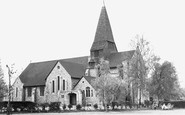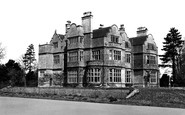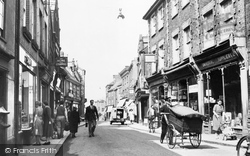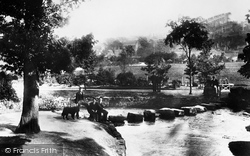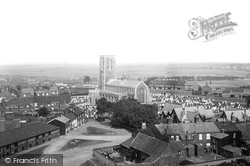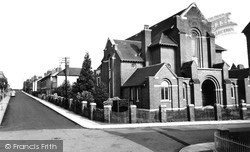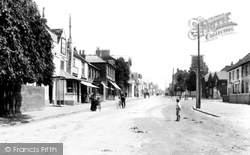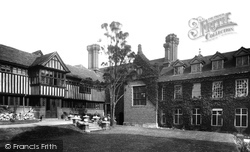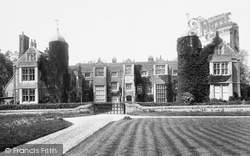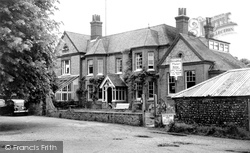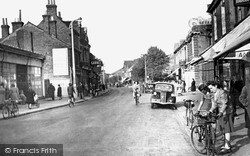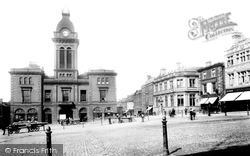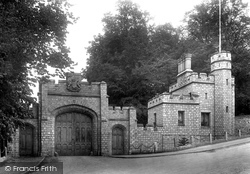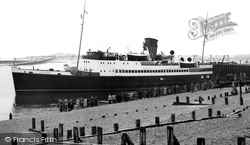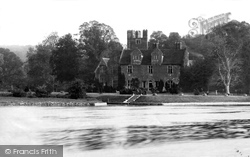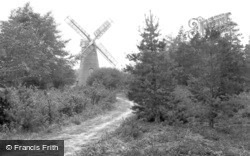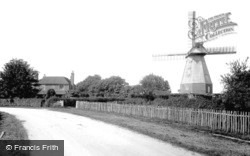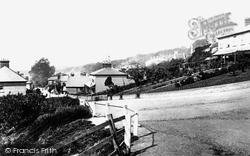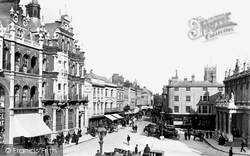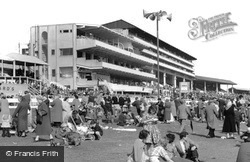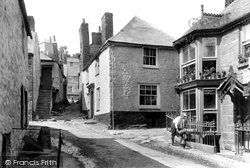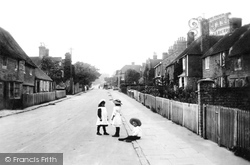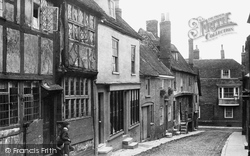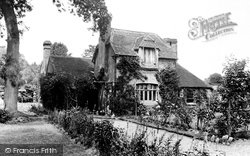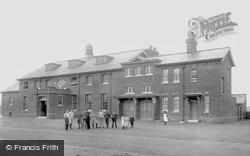Places
Sorry, no places were found that related to your search.
Photos
Sorry, no photos were found that related to your search.
Maps
Sorry, no maps were found that related to your search.
Books
Sorry, no books were found that related to your search.
Memories
655 memories found. Showing results 61 to 70.
1950s Rosenau Rd.
Hi, I was born in 1946 at the South London Hospital for Women and lived for a while at 15 Etruria St. Battersea, it was near Dogs Home Bridge and Battersea Power Station, where my dad, Charlie Jones worked. Soon we moved ...Read more
A memory of Battersea by
Life Until 40.
My family returned to South Ockendon in 1964, although both sets of grandparents were in South Road and Broxburn Drive. First lived in Clayburn Gardens, then in 1969 we moved to 34 Cruick Avenue. Small cul-de-sac, originally with ...Read more
A memory of South Ockendon by
Working At Litton Mill
I went to work at Litton Mill when I was seventeen. Worked in the Sizing, Charlie Mellor was the supervisor. I met many lovely people and a great lot of characters. The sizing was machines with huge rollers set in a bed of ...Read more
A memory of Litton Mill by
Old Lewisham Central Library
In the early 1950s I worked at the Central Library, near St Mary's Church. My most vivid memories are the long working hours (difficult for the social life of a young girl) and having to manually count the 'issue' before we ...Read more
A memory of Lewisham by
Rowley Bristow Hospital
This hospital played a big part in my childhood. My sister spent several weeks there after suffering a severe cut to her knee in the 1960s, her godmother worked there as a physiotherapist, and not long before it closed, my ...Read more
A memory of West Byfleet by
1950 61 A Child's Memory Of Kirkconnel
On 11th October 1950 I was born in the flat above Drife's butchers shop in Kirkconnel. My dad, Tommy, worked in the shop with Cameron Purvis and struggled to feed a family of three on the butcher's wage and ...Read more
A memory of Kelloholm by
Early Days
I was born and brought up in Pembroke terrace and with number of lads of like age wandered the mountains through theSaucy ap and over to overlook the Rhondda . We would climb up an run down hills,run through rivers and ply cowboys and ...Read more
A memory of Ogmore Vale by
Growing Up In Sutton
We lived at no 6 Greenfields, Sutton. My nan lived at four with my grandad Tom - in fact it was my family which helped forge Sutton village. I remember many families; Mr and Mrs Harland who ran the village shop, ...Read more
A memory of Sutton by
Hop Picking During The War
I hated hop picking. We started in 1938 to help pay for my sister's uniforms when she went to Ashford County School. At first my mother was slightly ashamed but soon entered ino the spirit and competition as to who ...Read more
A memory of Staplehurst by
The Convent.........Fondest Memories
I went to the convent from around 1963 t0 1971 and I was very happy there as a little "German girl". We went on the mini bus from Swindon with a few pupils we picked up on the way and already had a jolly time ...Read more
A memory of Lechlade on Thames by
Captions
405 captions found. Showing results 145 to 168.
Looking west along the High Street, we see buildings which are characteristic of North Norfolk: flints set in mortar, with brick facings.
This park was laid out for the benefit of working people to give them a break from the dust and grime of industrial Sheffield.
While many houses burned down in the fire of 1659, the 15th century church of St. Edmund survived because the churchyard served as a fire break.
The brick-built Congregational church on the corner of Union Street and King Street was opened in 1912 and still flourishes, now as the United Reformed Church.
Some time during the second half of the 19th century, Bracknell became a town, helped by the coming of the railway in 1856 and the development of market gardening and brick-making.
The Rush Cutters has a late 16th-century core, evident in the octagonal brick chimneys on the right and the massive stack behind the left hip. The houseboat is a real period piece.
This splendid red-brick Tudor house was once Chillington Manor, home of the Wyatts; one of the family, Sir Thomas the younger, led the rebellion against Queen Mary's marriage to Philip of
The red-brick Tudor manor house of Kentwell Hall stands at the northern end of Long Melford. Today it is best known for the striking Tudor Rose brickwork maze set into the courtyard.
This hotel near the sea front has brick walls with flint gables and garden walling. The tall chimney pots are all the same size. A flint walled outbuilding has a corrugated steel roof.
This bustling fifties shopping scene, with a substantial and surprising number of bicycles in evidence, shows the prominent red-brick Post Office on the left standing out against its rather dingy neighbouring
The Italianate, red brick Market Hall with its imposing clock tower was built in 1857, and still forms the centrepiece of the town's lively regular outdoor market.
Wyatt clad the brick house in the local hard granite- like Denner Hill Stone and gothicised the house with turrets and battlements.
The first 'King Orry' paddle steamer was built in 1842 by shipbuilders Aitken & Napier and sold in 1858. 'King Orry II', built by R Duncan & Company, was launched in 1871.
This splendid photograph shows Bisham Abbey overlooking a scenic stretch of the Thames.
Hurt Wood Mill is a small brick tower mill with four patent sails and a fantail. It is located on a remote hilltop surrounded by woodland. The mill has now been converted into a private house.
This is a Kentish white weatherboarded smock mill with a two-storey octagonal brick base, powered by four eliptic spring sails and winded by a fantail. It has now gone, and the site is built over.
Essex lacks natural rock so skills in the use of wood and brick-making have been well developed over the centuries.Attractive wrought iron fencing surrounds the long gardens on the right.
On the left is the red brick and stone Lloyds Bank building, with its fretted skyline, while to the right is the neo-classical Post Office, built in 1881.
Loyal enthusiasm reached a peak with Queen Elizabeth II's arrival at the Derby, but spectators' loyalties were divided between the two horses that fought out the finish.
Here we see a corner in the old part of the fishing village, with a Victorian granite house added on the right. Flower pots are all around the upper bay window ledge.
Three small children play on the long village street leading up the hill to the church, lined with well-kept red-brick and timbered cottages and neat gardens, and with the Swan public house halfway along
Thomas House, the timber-framed building on the left, has been well restored, while the corner house was replaced in 1920 by a brick and tile-hung Neo-Georgian Lloyds Bank, a most attractive building fronting
The spire, a timber one added in 1702, was replaced by the present low tiled pyramid in 1924, for the visual benefit of the church.
Here we see the brick-built army buildings of this military settlement in Surrey's army quarter on the high heathlands of the north west of the county.
Places (0)
Photos (0)
Memories (655)
Books (0)
Maps (0)



